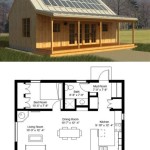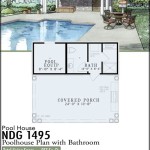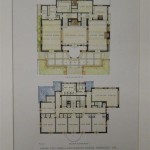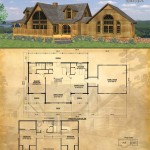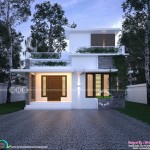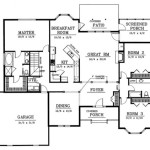Gothic Cottage Style House Plans: A Guide to Their Essential Aspects
Gothic cottage style house plans evoke a sense of timeless charm and whimsical elegance. Originating in the 18th century, these homes blend Gothic Revival elements with traditional cottage features, creating a captivating and unique architectural style.
If you're drawn to the allure of Gothic cottage homes, it's essential to understand their key characteristics. Here's a comprehensive guide to the essential aspects of Gothic cottage style house plans:
Exterior Features
The exterior of a Gothic cottage is characterized by its steeply pitched roofline, often with a dormer window or two. The walls are typically clad in stone, stucco, or clapboard siding, and feature pointed arch windows and doors. Other common exterior details include decorative bargeboards, finials, and gingerbread trim.
Asymmetrical Facade
One of the most distinctive features of Gothic cottage style is its asymmetrical facade. This means that the front of the house is not symmetrical, with different-sized windows and doors arranged in an irregular pattern. This asymmetry adds to the home's charm and visual interest.
Pointed Arch Windows and Doors
Pointed arch windows and doors are another defining feature of Gothic cottages. These arches add a sense of height and grandeur to the home's exterior. They may be single or double arched, and often feature decorative stained glass or tracery.
Interior Features
The interior of a Gothic cottage typically features high ceilings with exposed beams, creating a sense of spaciousness and old-world charm. The rooms are often decorated in a cozy and eclectic style, with a mix of antique and modern furnishings.
Fireplaces
Fireplaces are a common feature in Gothic cottage style homes. They provide warmth and ambiance, and often serve as a focal point in the living room or dining room. The fireplaces may be adorned with intricate mantelpieces and decorative tiles.
Stained Glass Windows
Stained glass windows are another popular element in Gothic cottages. These windows add color and character to the home, while also providing privacy. They may depict biblical scenes, nature motifs, or abstract designs.
Landscaping
The landscaping around a Gothic cottage typically features lush gardens, winding paths, and mature trees. The gardens may include flowers, shrubs, and herbs, creating a sense of tranquility and beauty. The trees provide shade and privacy, while the winding paths invite exploration and discovery.
When choosing Gothic cottage style house plans, it's important to consider the size, location, and budget for your project. These homes are typically smaller than traditional Gothic Revival mansions, but they still offer plenty of space and character. With careful planning and attention to detail, you can create a beautiful and unique home that will be enjoyed for generations to come.

Downing Cottages Gothic House Vintage Plans Revival Architecture

Gothic Revival House Plans Google Search Victorian Vintage Floor

Pin On Sim Houses

Charming Gothic Revival Cottage 1204 Sq Ft Architectural Designs 43002pf House Plans

Archi Maps Architecture House Victorian Plans Gothic

Gothic Revival Style House Plans Floor

Eplans Gothic Revival House Plan Curved Hearth Fireplace 1065 Square Feet And 1 B Small Cottage Homes Plans Craftsman Style
Victorian House Plan 4 Bedrms 3 5 Baths 3875 Sq Ft 137 1481

Plan 43044pf Gothic Revival Gem Cottage House Plans Floor

9 Design Tips For Your Gothic Revival Inspired Home Archways Ceilings

